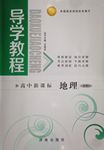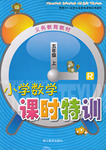题目内容
“If you want to see a thing well, reach out and touch it!”That may seem a strange thing to say. But touching things can help you to see them better. Your eyes can tell you that a glass ball is round. But by holding it in your hands, you can feel how smooth* and cool the ball is. You can feel how heavy the glass is. When you feel all these about the ball, you really see it. With your skin, you can feel better. For example, your fingers can tell the difference between two coins* in your pocket. You can feel a little drop of water on the back of your hand, too.
All children soon learn what “Don’t touch!” means. They hear it often. Yet most of us keep on touching things as we grow up. In shops, we touch things as we might buy: food, clothes. To see something well, we have to touch it.
There are ways of learning to see well by feeling. One way is to close your eyes and try to feel everything that touching your skin. Feel the shoes on your feet, the clothes on your body, the air on your skin. At first, it is not easy to feel these things. You are too used to them!
Most museums are just for looking. But today some museums have some things to touch. Their signs say, “Do touch!” There you can feel everything on show. If we want to see better, reach out and touch. Then you will really see!
【小题1】By touching things, ______.
| A.you will have a strange feeling |
| B.you will learn how to reach out your hand |
| C.you can tell the difference of the things |
| D.you can tell what colours they are |
| A.try them on first |
| B.keep their right hands on them |
| C.ask about them |
| D.feel and touch them |
| A.the things are used by people, too |
| B.people feel the things too often |
| C.people know how to use the things |
| D.the things are easy to feel |
| A.Touching is more important than seeing |
| B.Our feet, fingers, hands and skin can help us buy food. |
| C.People have to learn to see by feeling as they grow up. |
| D.Visitors can feel the things on show in some museums. |
| A.Touching by Feeling. | B.To See or to Feel? |
| C.To See Better—Feel. | D.Ways of Feeling. |
【小题1】C
【小题2】D
【小题3】B
【小题4】D
【小题5】C
解析试题分析:如果我们想更深刻的了解某个事物,不仅要远观,而且还要近距离的触摸一下。儿童在成长的过程中听到的多是“Don’t touch!”但是他们对一些新鲜事物仍然用手去触摸,这种感觉是用视觉无法感悟到的。现在很多博物馆都允许游客触摸一些古物。
【小题1】细节理解题,根据文中语句“But touching things can help you to see them better.”理解可知。通过触摸可以感知两个事物的不同。
【小题2】细节理解题,根据文中语句“In shops, we touch things as we might buy: food, clothes. To see something well, we have to touch it.”理解可知。我们在购物时,常用手去触摸一下商品,故选D。
【小题3】细节理解题,根据文中语句“At first, it is not easy to feel these things. You are too used to them!”理解可知。人们经常接触它们,故选B。
【小题4】细节理解题,根据文中语句“Most museums are just for looking. But today some museums have some things to touch.”理解可知。现在很多博物馆允许游客触摸展品,故选D。
【小题5】标题理解归纳题,根据文中语句理解可知,本文主要讲了通过触摸可以更好的了解某个事物,故选C。
考点:议论文的阅读理解
点评:本文主要介绍了在我们认识事物的过程中触觉和视觉之间的不同。所涉及的题目都是一些细节理解题。对于细节理解题,只要学生认真阅读,就能很容易的知道问题的答案。

 导学教程高中新课标系列答案
导学教程高中新课标系列答案 小学课时特训系列答案
小学课时特训系列答案
| |||||||||||||||||||||||||||||||||||||||||||||||||||||||||||||||||||||||||

 our
dream will come true in the end.
our
dream will come true in the end. tell
stories.
tell
stories. It was Sunday morning. A butcher(屠夫) heard the doorbell(门铃) and thought it must be a customer. But he was surprised to see that a dog was
It was Sunday morning. A butcher(屠夫) heard the doorbell(门铃) and thought it must be a customer. But he was surprised to see that a dog was Mo Yan, a well-known Chinese writer, won the Nobel Prize for literature(文学) in 2012. He was also the first Chinese writer who got this prize in history. When he was interviewed, he said he was only a normal person who could tell stories. He especially thanked his mother. He thought his mother had a strong influence on him.
Mo Yan, a well-known Chinese writer, won the Nobel Prize for literature(文学) in 2012. He was also the first Chinese writer who got this prize in history. When he was interviewed, he said he was only a normal person who could tell stories. He especially thanked his mother. He thought his mother had a strong influence on him.